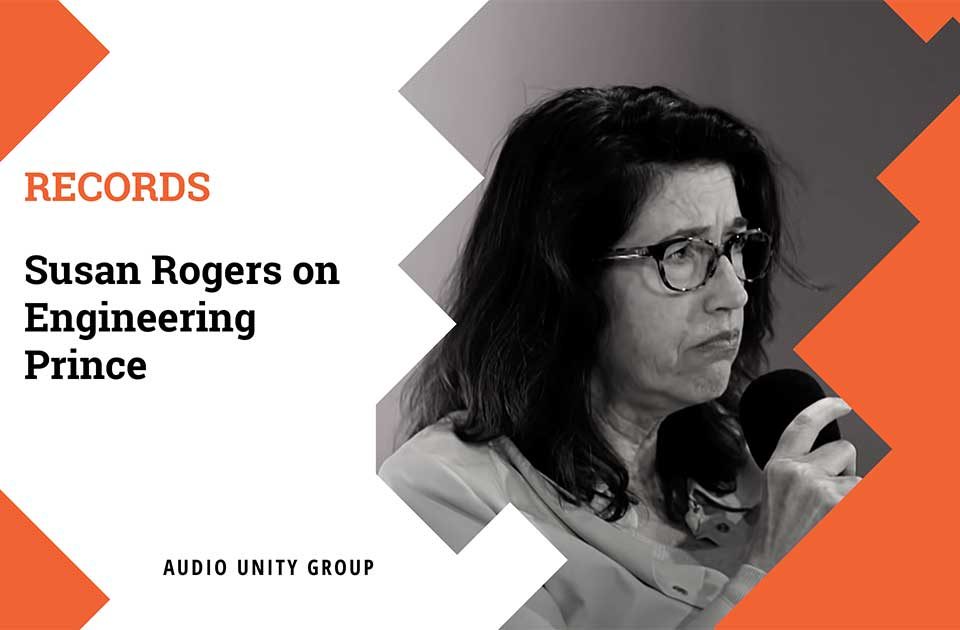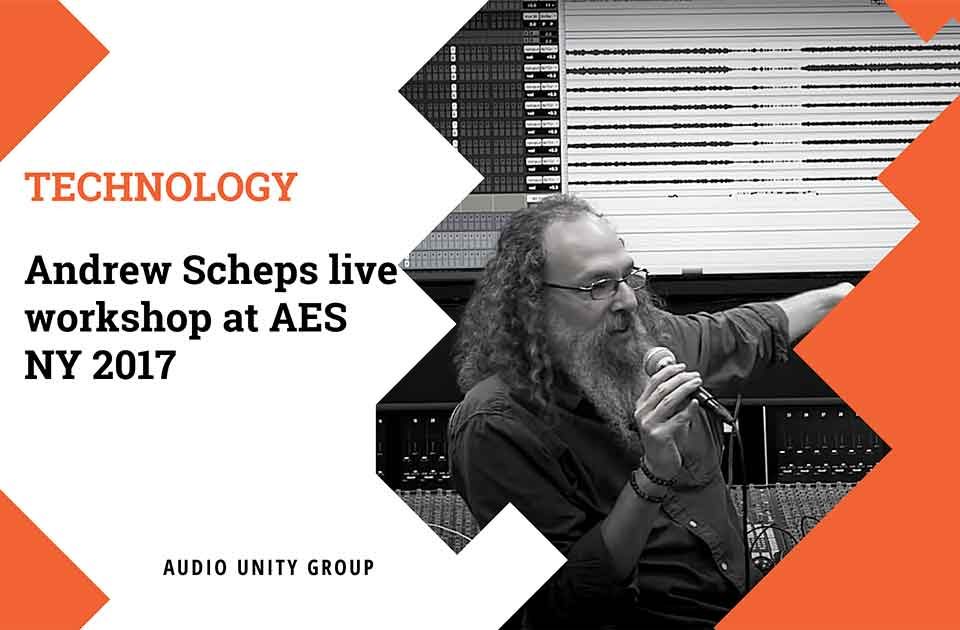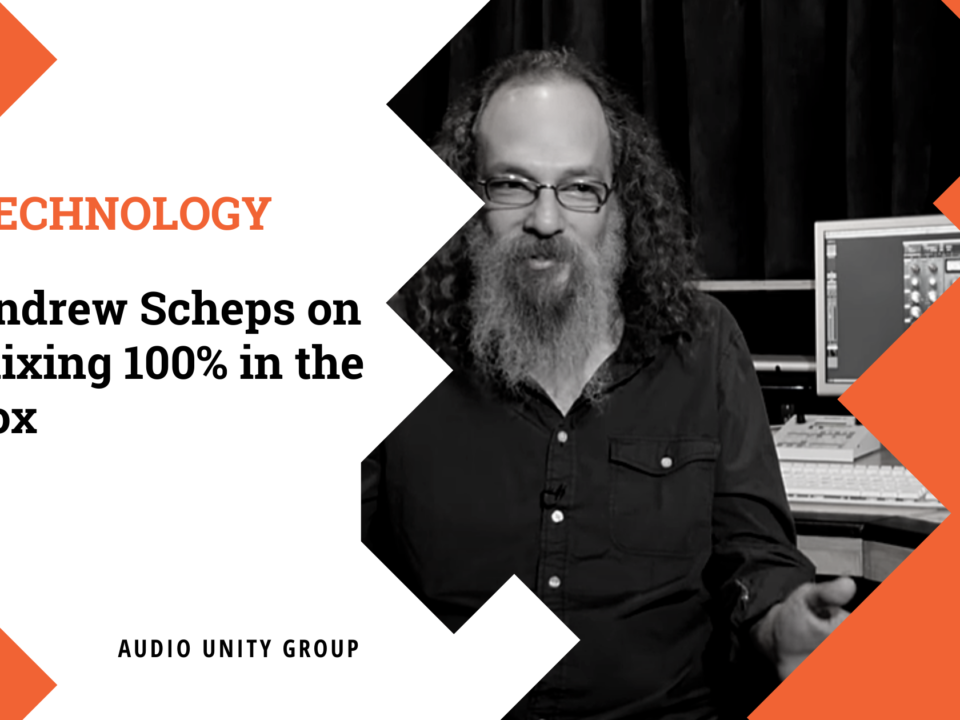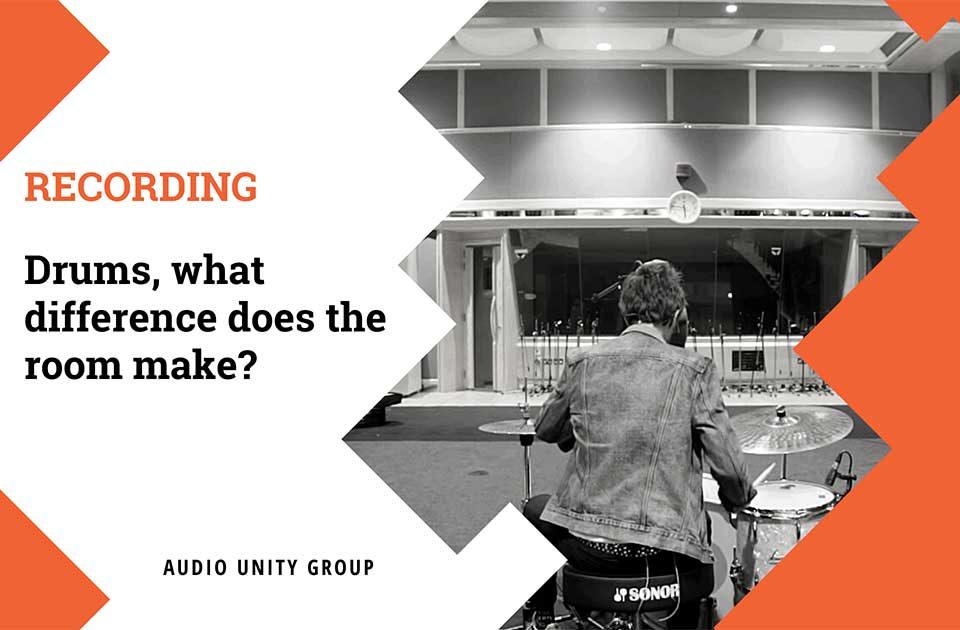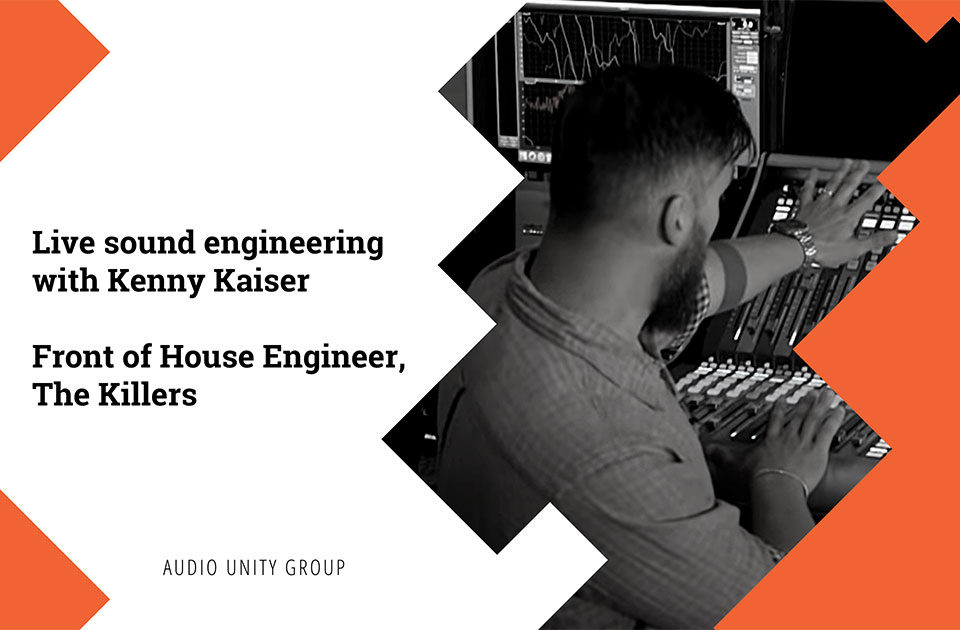
Interview With A Legend: Al Schmitt
January 29, 2019
Andrew Scheps at the University of Oxford – “What Comes Out Of The Speakers”
January 29, 2019A Master Class in speaker placement
Setting up your speakers is real work – concentration and patience paramount. We’ve invited our Senior Manager for the Dynaudio Academy, Roland Hoffmann, to join Ask the Expert studio to talk about speaker placement. It soon turned into a true Master Class
Download FREE pdf
mastering chain cheat sheet
Use this 10 step mastering chain sheet to improve your mastering processes and to make sure you do right things at the right time!
DOWNLOAD PDF
Video transcript
[00:00:35.450] – Speaker 1
This is all about room acoustics and where to put speakers. And I have had hundreds of systems over the years, and every room is different. So you try to make it work, because very often it’s on a HiFi show or it’s at a dealer show. Sometimes even it’s customers at home. And especially in HiFi shows, you have to get the sound right. You cannot move the walls. You cannot call a room acoustic expert, and they work something out. Over the next weeks, you have to work with the speakers in the room, make them sound right.
[00:01:07.310] – Speaker 1
And that’s basically what everyone has at home. They want to have it not in that room, not in that room, but here. So after a while, you start to figure out some things that always work and always improve the sound, even though everyone is different. There are some things that always seem to work where we are.
[00:01:25.730] – Speaker 2
And I know that when we go on a trade show, you’re almost always there to do a live demo set up, make sure that everything sounds right. Yeah.
[00:01:35.690] – Speaker 1
Because the best speaker in the world is worth nothing. Well, almost nothing if you really don’t have that sound experience in that room. So you have to really make it sing in that room.
[00:01:45.530] – Speaker 2
And with that said, I think that we should just get started and answer some questions. Right. Okay. We have a question from Mark and Siprian, and they were wondering if there’s some kind of ideal distance from the wall. So can you talk a little bit about that? Yeah.
[00:02:11.730] – Speaker 1
What is important to understand is that there’s never the one ideal, say, one metre, 40 inch in most rooms, it all depends on the room length and the room width.
[00:02:21.690] – Speaker 2
Okay.
[00:02:22.770] – Speaker 1
Especially in the low frequencies. It’s all about physics and Lum acoustics. And it’s important to understand that sound behaves like waves, like water waves. Naturally, when you go into the waterways, it’s like on the beach, you have these waves and they roll out to the beach in the room. I don’t have a beach. You don’t have a beach. So the waves stay in the room and they build up something called standing waves. Okay. So across all the low frequencies, you have standing waves in the room and where are these standing waves and how strong are they?
[00:02:56.910] – Speaker 1
That depends on the room length and width.
[00:02:59.850] – Speaker 2
One question I kind of feel that you’re saying here is that these waves belong, so to speak, to the room and not to the speaker in the room.
[00:03:11.910] – Speaker 1
That’s right. Even if you upgrade the speaker and buy a bigger speaker or more expensive speaker, the room waves. And the room knows the standing waves. They belong to the dimensions of the room and not to the speaker. So you first have to solve or find the good listening position and speaker position before you upgrade the speaker. When you then upgrade the speaker, you really get the best sound experience, but you have to show that first. Okay.
[00:03:37.410] – Speaker 2
So it’s about finding out. So in this room, it’s like five metres long, four metres wide. Where should I sit? And how do you go about doing that?
[00:03:47.970] – Speaker 1
I can show you a picture if we look at this looks confusing at first, but I will try to solve it. So I was talking about standing waves in the room. And what actually happens is if we imagine this is a room. So we have the speakers here and we have someone sitting here. What happens in the low frequencies? You have certain waves of face with certain different frequencies. And you have some areas in the room where the base is exaggerated. So peaks in the base. And you also have dips waves where the base actually is cancelled out.
[00:04:24.570] – Speaker 2
Can you point out some of the places in this? Yeah.
[00:04:28.470] – Speaker 1
If this is the room Lane, it’s at first sight, very easy to see. We have one big problem area where there’s always a peak and always a dip is the centre of the room. So that would be a very bad place for sitting there or no one’s doing that normally. So that’s fine. But we see two other problem areas here. One is right near the front wall where the speakers are, and one problem area is right next to the rear wall. So if you put your speakers here too close to the wall and sit too close to the wall, you will definitely have an exaggerated base at most low frequencies.
[00:05:07.710] – Speaker 1
So there’s not so much an ideal distance in metres or an inch. But there are these waves. So that means we can find ideal spots in the room.
[00:05:20.370] – Speaker 2
And again, the reason that we can’t say like, oh, yeah, you should have them 50 centimetres from the back wall is because these standing waves, as you were talking about holding, belong to the room. And every room is different.
[00:05:35.550] – Speaker 1
Everyone is different. So every time you find advice, say, oh, I found out 70 centimetres is always the best. No, it’s only the best for the room you experienced it in. It doesn’t mean anything for all the hundreds of other rooms.
[00:05:47.070] – Speaker 2
Okay.
[00:05:48.450] – Speaker 1
Still, there are some things you can do in a room, and if you move to the next picture, you just Zoom in to one frequency. Let’s say 60 Hz or something. And now it’s easier to see that if we still have a speaker somewhere to put here and the seat somewhere here, that if you move your seat at the wrong spot. Say, here you would complain about there’s no base Where’s the bass gone at certain frequencies, or if you put the speaker in an area where there’s a dip in the bass, then you will have no base.
[00:06:23.850] – Speaker 1
If you put them in the right positions, you will have them smoother and still deeper base.
[00:06:29.610]
Okay.
[00:06:30.750] – Speaker 1
So if we look at that and we have the same not only for HiFi systems at home, but also in the studio. Many studio engineers have the same issue where to put the speaker and where to sit. And if you look at it, and if you measure it, you can find areas in every room. And in the next picture, we see the room more from above. So now we look down on the room. And if you look at these waves, there are some areas where the waves are more even than in other areas.
[00:07:00.630] – Speaker 1
And this is one fifth from the room length and also one fifth from the room width.
[00:07:06.630] – Speaker 2
Okay.
[00:07:07.410] – Speaker 1
This is one area you can see in the next picture where it’s not the golden rule, but it’s a very good starting point where it usually sounds much better because behind this one fifth, most bass frequencies build up the same here and also the same to the side. So it’s a very good starting point to have your listening seat moving one fifth from the room length and also the speakers one fifth from the other wall and then see how it sounds like.
[00:07:38.190] – Speaker 2
This is just like a really good starting point. To say new room, new speakers. How do I figure it out? Well, let’s not start from scratch, but let’s start from an educated point of the starting point and say one fifth from the side walls and the front and rear wall. And then you’re actually off to a good start figuring out you have to have a good start.
[00:08:01.350] – Speaker 1
And then you have to use your own ears and to find the right spot in your room. But generally it works very well.
[00:08:09.330] – Speaker 2
One thing I notice in this picture that we have on the screen right now is that you’re measuring from the front of the speaker.
[00:08:17.790] – Speaker 1
That’s right. That’s one important point. And I like to show it with the speaker. Most people measure from the rear cabinet or from the side cabinet. Acoustically the side of the speaker doesn’t really matter, and the rear doesn’t really matter what the acoustic centre is where the drive units are.
[00:08:39.330] – Speaker 2
Okay.
[00:08:39.690] – Speaker 1
So this is the area where all the frequencies are reproduced by the woofer and by Twitter. So this is the acoustic axis. So you always measure from this very spot.
[00:08:50.130] – Speaker 2
Okay. Because that stood out to me, and I’m not as educated and high five as you obviously, but I would have thought that I should measure from the back of the cabinet or from the sides. Right.
[00:09:04.290] – Speaker 1
Many people do that, many people try to measure from here, but imagine you have a very, very deep speaker, then you suddenly have to move it more way to the wall. No. Why? Because the acoustic centre is always here. Okay, so then this one fifth doesn’t sound so challenging anymore because you already have the death of a speaker.
[00:09:24.270] – Speaker 2
Yeah. Cool. To try and sum this up just a little bit. I think that if we go back to Mark and Siprian’s original question, right. How far from the back wall should I place my speakers? And is there an idea? Well, there really isn’t. You could put this golden rule. You could use that as a starting point, but from there, it’s really testing it out. Figuring out.
[00:09:52.410] – Speaker 1
Okay.
[00:09:52.650] – Speaker 2
What works for me.
[00:09:53.610] – Speaker 1
And the ideal area will be somewhere around here. And even if you cannot leave it there, not everyone can sit one fifth from the wheel wall, but at least you can experience it once. And then you try to make it more manageable at your home.
[00:10:08.910] – Speaker 2
Cool. Thank you.
[00:10:15.370] – Speaker 1
Allen.
[00:10:15.910] – Speaker 2
Our next question is from Nicholas, and he was wondering with reappointed speakers like the ones that we make. Is it a good idea to have either a dampened or diffused back wall?
[00:10:34.390] – Speaker 1
That’s a good question because of the bass reflex. But it’s important to understand that the bass reflex only emits a very narrow band, low frequency sound. It’s more important where the speaker is. Like we talked about the distance from the acoustic centre to the rear wall. So the bass reflex Port only emits a frequency around 40 Hz or 50 Hz, depending on the tuning of the speaker. For example, in the special 40, it’s going to be around 40 Hz, but all the other frequencies, that’s what’s happening on the front of the speaker.
[00:11:07.570] – Speaker 1
So this is what you have to take care of. You don’t need a particular damping or absorption behind the speaker because of the base reflect. Better try out a certain distance from the rear wall. Then you don’t need to really damping or absorbing the low frequency energy behind the speaker.
[00:11:25.150] – Speaker 2
So it’s much better to figure it out. Okay. So it should be X amount of centimetres from the back wall. Instead of testing out different fabrics and hand drapes behind it. Yeah.
[00:11:36.550] – Speaker 1
And if you do some absorbing behind the speaker, then it needs to be tuned to a certain frequency, and then you have to measure it, which is the frequency that you want to absorb. So I would be very careful with buying absorbing materials.
[00:11:54.470] – Speaker 2
If you have to find out. Okay. So it’s this particular frequency and you have to find a material that then dampenste fuses that particular frequency. It sounds like a lot of work. Also, instead of just figuring out the correct distance to them.
[00:12:09.050] – Speaker 1
And you might remember how we talked about the listening distance, how it changes the sound in the room, you might damn frequencies that you might think there were problems in this area, but the problems came from having the wrong spots of the speaker or sitting at the wrong spot. So you might buy an expensive absorber or base trap or something because you think you have a 60 Hz resonance or something. But in fact, you were sitting not at the right spot.
[00:12:34.550] – Speaker 2
Yes. You were sitting in a dip. Yeah.
[00:12:36.770] – Speaker 1
And you’re absorbing frequencies, even though it was more about the location of the speakers and the seat.
[00:12:42.710] – Speaker 2
So Nicholas shouldn’t worry all that much about the diffuse system.
[00:12:46.790] – Speaker 1
No test and try several speaker positions and where you sit in the room and think about absorbers and diffusers later.
[00:12:56.570] – Speaker 2
So, Nicholas, you have some homework to do. Thanks, Allen. I want to talk a little bit about powerful or not powerful bases. And it’s because Eric Hammond, he wrote us that in his listening position, it doesn’t seem like there’s any power to the low frequencies. Can you talk a little bit about what could actually be going on? Yeah.
[00:13:26.370] – Speaker 1
But the good news for Eric is there is a base somewhere in his room. It’s just possibly again at the wrong spot. So if we go back to these drawings from the first of the waves, there are areas in the room where there will be no base. You might think it has something to do with the speaker or something to do with the music, but it might be just the place where you’re sitting or the place where the speakers are or both.
[00:13:54.270] – Speaker 2
Yeah.
[00:13:55.410] – Speaker 1
You could easily play, say, 60 Hz tone or 80 Hz tone, and walk across the room and you will hear some areas where the bass disappears. It’s just gone. But it’s not gone. It’s just some inch further or some inch back. The base reappears there. So since it’s a closed room, Eric’s room will have base somewhere, you just have to find it.
[00:14:20.790] – Speaker 2
Yeah. And it’s again because of the standing waste that you were talking about earlier. Right. That you will have in any given room points where it just disappears because there’s a dip or other places where it’s just exaggerated.
[00:14:36.390] – Speaker 1
And so the base will be there somewhere.
[00:14:38.610] – Speaker 2
And I guess that it’s a really cool tip playing a 60 80 Hz tone because you can walk out then and figure out what’s up and down. Yeah.
[00:14:47.790] – Speaker 1
Because most music has a lot of different frequencies in place. Sometimes it’s easier to use one single frequency. But then again, you have to think about all the other frequencies. So it’s not worth trying the 60 Hz tone, and then you find two spots. You have to find so many different frequencies. So that means in the end, it’s better to use music again.
[00:15:07.650] – Speaker 2
Okay. So what I hear you’re saying is that if you go with one tone at a time work method, you would have your work cut out for a long day because you would have to go through all of them.
[00:15:19.830] – Speaker 1
You would have to listen to 60 Hz music from then on.
[00:15:22.950] – Speaker 2
That really doesn’t sound that appealing. So we were talking earlier about rooms that are not square. And Mark, we talked about his question a little while back. He actually asked us, well, what should I do? Where should I put my speakers? If I have a completely square room? And I know we were talking previously about this and that’s actually quite a challenging room. Right.
[00:15:52.950] – Speaker 1
The square room is the most challenging because I said that the standing waves depend on the room length and the standing wave depend on the room width.
[00:16:02.310] – Speaker 2
Yeah.
[00:16:02.790] – Speaker 1
If you have the same width and length in the room, you will have double execrated dips.
[00:16:10.050] – Speaker 2
So the highs get really high?
[00:16:12.090] – Speaker 1
Yes. They get really strong. So it’s not impossible. It’s really challenging to find good spots in a square room. Still, it works. So the thing I talked about trying one fifth from one wall and one fifth from the other one is still valid. So I would still try that out in the square room. I know it’s not easy because that means you have to sit quite far in the room, but it’s at least worth trying it to listen. What is possible in my room?
[00:16:39.090] – Speaker 2
Is there anything else that you can do or any other methods that you can use to figure out where to put your speakers?
[00:16:46.290] – Speaker 1
Yeah. It’s in a square room. There’s one thing called the golden ratio.
[00:16:51.090] – Speaker 2
Okay.
[00:16:52.110] – Speaker 1
Again, it’s not a strict rule, but it’s worth trying out. And that is based on the square room having symmetry. So 100% symmetry. So it’s a good idea to break up the symmetry in a way. So I have one picture. I think it’s this one. Now, one more. I think that one. So if we imagine we have a square room here the theory, because the golden ratio is to break up symmetry as best as possible.
[00:17:21.330] – Speaker 2
Okay.
[00:17:22.050] – Speaker 1
And that could be worth trying imagining a line in both areas where the speakers are in a ratio of eight to five from the sidewall distance and the real world distance. Okay. It’s important. This is not an inch. This is not centimetre. It’s a ratio.
[00:17:38.250] – Speaker 2
So eight parts and then five parts.
[00:17:40.290] – Speaker 1
Eight parts and five parts. And you can reverse that. It can also be five parts and eight parts. Okay. And then you just imagine these lines where the ratio always is eight to five. And you use your ears and a good spot to listen to and move the speakers along these lines, or the five to eight lines, move the speakers along the line and try to listen. There will be some spots where the speaker sounds much better simply because you broke up the symmetry in the square room so.
[00:18:11.910] – Speaker 2
It can work. You can get decent sound reproduction and room. And if we look at all rooms, I get the feeling that there’s a when it all comes down to there’s a lot of footwork that you have to do, and there’s a couple of good starting points, right. You have the eight five ratio here and then you had the previous one we talked about exactly. And they’re a really good starting point. But when you’ve done that, then the hard part comes. That’s at least what I’m hearing you say, because now you have to figure out so this actually sounded pretty good.
[00:18:52.670] – Speaker 2
But what if I move the speaker just a little bit to one side or a little bit back or a little bit forward? That’s where you kind of fine tune.
[00:18:59.810] – Speaker 1
Yeah, but the good thing is to fine tune with music, so you can actually have some fun with it. It’s not that you have to buy an expensive set of microphones and analysing tools. You can go very far with music and listen to music again and again and compare how things change, because there’s no advice out there that counts for your room, because every room is different.
[00:19:26.270] – Speaker 2
And just to wrap this question up, if you have a square room, try your luck with the eight five ratio, because that could really be a good place to start.
[00:19:37.970] – Speaker 1
Yeah. Or the other way around. If I would place these speakers with equal distance to the rear one sidewall, it’s probably even worse. And this is the way to go.
[00:19:50.630] – Speaker 2
Okay. Perfect. Holland, we have been talking about a lot of really good tips on how you can get started finding the right position. And it’s been quite general. And I kind of want to try to apply this to a setting.
[00:20:10.590] – Speaker 1
Now.
[00:20:12.570] – Speaker 2
He actually sent us the schematics of his room and two locations. And I want to show you here on the screen behind you. So this is Sip Prince’s room. Okay. And he’s asking us, so I have two places I can sit. Which one makes the most sense for me.
[00:20:31.710] – Speaker 1
Yeah. Looking at it. So he wants to either sit here in this area or here. It’s a bit difficult to say from here because we are not there and we cannot listen. I would move the system more here because there’s just less walls, less boundaries down here, right down there because there’s just more space to work with the speakers in the room to find good spots in the other area.
[00:20:58.810] – Speaker 2
This one up here.
[00:20:59.590] – Speaker 1
It’S not too small. It’s also three metre 80. But again, you have a wall, you have this area. And I would try to start with the open space.
[00:21:09.250] – Speaker 2
So if we look at the open space here, we were talking about symmetry earlier and I can see Ciprian in the schematics here. At least he’s working at having from his listening position, the right speaker, 1.2 metres from the side wall and from the back wall. And it’s not in the acoustic centre. Can you talk a little bit about that? Yeah.
[00:21:33.430] – Speaker 1
Well, we need symmetry about the triangle, and we talk about that later. It’s not so critical because there’s no wall here, but still having the equal distance from the rear wall and from the side wall is not ideal. I would try to break that up. You don’t have to stick close to this golden ratio, but it’s worth a try. But at least I would make it more equal, because every time you have equal distance to two walls, you will have some wave, some low frequencies building up, and you have some low frequencies cancelling out each other and you don’t want it.
[00:22:08.170] – Speaker 1
You want a smooth and still deep bass, and therefore it’s better to get some unequal distance here. Okay. Whether this is the shorter area or this is the short term, it doesn’t really matter. It depends on where you sit.
[00:22:20.710] – Speaker 2
Cool. And as you said, it’s obviously hard for us to say that that’s just how it is, because we haven’t been there. But you would definitely recommend Zippian to start out working with the red zone, so to speak.
[00:22:37.930] – Speaker 1
Right. Especially since he has a larger speaker. He has a Danali Sapphire, which is a very good speaker, and he needs some space. And therefore I would recommend the more open space for that speaker. Perfect.
[00:22:48.010] – Speaker 2
We have another picture. And this is from printing. And his question is actually, if he should move his speakers a little bit forward in his room, what are your thoughts on that? First?
[00:23:02.530] – Speaker 1
It looks very good because he’s not too close to the rear wall. That seems like a very good distance. This confidence he wants has enough space. When I say enough space, it’s a little tricky to say, because remember I said that in the low frequencies, it all depends on the room length of where you put your speakers, even from this photo where you think, oh, that’s a good distance. You don’t know how deep the room is. So if it’s a very deep room, it might just might be very good distance from the rear wall if it’s a very short room and you cannot see that it might be again at the one point where too much base in some frequencies and cancelling out base in some other areas.
[00:23:41.770] – Speaker 1
So at first it looks good. But maybe he should try to measure the room length, calculate the one fifth and see how far he’s away from that reward.
[00:23:53.650] – Speaker 2
Okay. One thing that I noticed in this picture of the Ting centres is that obviously it’s not the widest room. So the speakers kind of have to be close to the side walls. There’s not much you can do about that. But if you had to say something about it or give some advice on what he could do, where would you start? Yeah.
[00:24:20.830] – Speaker 1
You can’t do much about the room dimensions. Probably it helps if you tow the speaker slightly more to have a little bit less energy to the side walls. But probably what helps more is to have some sort of absorption or diffusing that the side has that can be there’s no space. You cannot put a bookshelf there or something, but some fabric heavy drapes, maybe some curtains, a wall carpet, something soft, something made or fabric that would help to have a better stereo imaging.
[00:24:57.310] – Speaker 2
Cool. I hope that you guys can use Holland’s advice on these two positions. So thanks, Houlin. Yeah. Okay. One thing I noticed that you were talking about is that you could play a one note, 80 Hz and just use that. And we talked about, well, then you had to go through every single note, and that would be a bit boring, I guess. So if you should do something that’s a little more interesting and do this with music. Is there anything that you can recommend for finding the right base performance in a room?
[00:25:42.410] – Speaker 2
Yeah.
[00:25:43.070] – Speaker 1
It usually works very well if you have a baseline playing along.
[00:25:47.510] – Speaker 2
Okay.
[00:25:47.690] – Speaker 1
So that’s always repeating itself along the song. So while the track is playing, you can walk around the room and listen to it. It’s not so good to play, say, a disco or electronics track where it’s just one bass or kick Tom or something hits from a pizza.
[00:26:07.190] – Speaker 2
It’s not right.
[00:26:07.970] – Speaker 1
Not the right one, unless that’s the only music you listen to. But then you actually find a good position for the speaker and where you sit for that particular bass frequency. And that’s not what you want to do. You want to find the best position where all of your music sounds good. And therefore I would recommend to use music, but certain tracks will have this repetitive baseline.
[00:26:29.810] – Speaker 2
Do you have any suggestions? Yeah.
[00:26:31.430] – Speaker 1
I brought some CDs so we can make some suggestions. One that always works is an old one. Lou Reed Walk On the Wild Side because it has this double bass playing all along the song. It’s not very deep, but it’s strong enough so you can easily focus on it and then again, move the speakers and move the seat. Cool. Another one is a bit more than this from Def Con. Get Lucky. Probably you heard it too often, but it still works. If you only focus on the base at this time, it works very well because it also has this base going on and on.
[00:27:08.870] – Speaker 1
It’s not a one load base. It plays along. It covers a lot of lower frequencies, but not too many, so you can easily focus on it.
[00:27:17.150] – Speaker 2
Cool.
[00:27:17.510] – Speaker 1
Same goes for an even older track that’s from the but it has a similar baseline playing along. And that’s the tracker, the model. Okay, so that’s very good. Another one for change is by Turbo Weekend Danish Turbo Weekend. They have a track called Sweet Jezebel, and that also works very well, especially in the base.
[00:27:49.830] – Speaker 2
You can easily focus on how the bass plays in the room and the thing that binds all the common denominators for these tracks is, as you said, repetition in the note, right? Yeah.
[00:28:02.550] – Speaker 1
So that’s easy for you to follow. And still, it’s not one note base, like a frequency of 80 Hz or 60 Hz. That doesn’t really help you across all the base notes.
[00:28:13.050] – Speaker 2
And it’s about moving around in the room while that track is playing and move the speaker slightly.
[00:28:19.230] – Speaker 1
And after a while, you will really know how the bass should sound like you will hear when it’s right. So to speak.
[00:28:27.510] – Speaker 2
Cool. I would definitely go with the Daft punk one, but that’s just my taste. Thanks, Houlin.
[00:28:33.990] – Speaker 1
Welcome.
[00:28:39.430] – Speaker 2
So, Wallen, our next question comes from a bunch of people. It’s from Thomas Dragon, Eric, and I have to say a name that brings me back to when we started to ask the expert where I always said, I’m sorry. I hope I’m pronouncing this correctly. And that applies as well today. So it’s Sriapa, and it’s about the stereo triangle and listening position and what to do about that. I was hoping that you could share some thoughts on it.
[00:29:09.970] – Speaker 1
Yeah. First of all, music, record and stereo requires the stereo triangle. Not everyone can do that at home, but ideally, you sit in a stereotype in a studio. You always have this perfect stereotype. So three equal sides and you sit at the centre at the peak of the triangle, and you have a very near field listening distance and have a perfect damp environment and so on in a home Hi Fi setup. It usually works better if you have a longer triangle.
[00:29:43.510] – Speaker 2
Okay.
[00:29:43.750] – Speaker 1
So imagine you are three metre or 120 inch apart from the speakers apart, then you sit slightly further back. Your listening distance to each speaker is more than these three meters or one or 20 inch. So that gives a very good sound balance and energy, because you’re not analysing music, you are listening to music. So it’s absolutely fine to sit a little bit further back rather than closer to this triangle.
[00:30:09.850] – Speaker 2
And it depends on the type of listening that you’re actually doing. Right.
[00:30:14.230] – Speaker 1
If you’re just listening to music and the perfect triangle is of no help if you sit still at the wrong point in your room. So you really have to be flexible and you have to have a symmetric triangle, but sitting exactly at the peak or slightly further back, I would recommend slightly further back. Okay.
[00:30:32.410] – Speaker 2
Cool. But again, stereo triangle and listening position. When I have that down, I sit in the right triangle.
[00:30:42.010] – Speaker 1
Is there more to it than that or is it just it’s also about the towing and the side reflections?
[00:30:49.510] – Speaker 2
I think that I have a picture here, right?
[00:30:52.330] – Speaker 1
Yeah.
[00:30:53.290] – Speaker 2
We can see a little bit of towing.
[00:30:55.150] – Speaker 1
We can see a little bit of towing. So first of all, we imagine sitting here, which is a triangle or slightly longer triangle, and then of course. The question is, do I have the speakers pointing directly at me, or do I have the speakers firing parallel into the room? And this picture shows a very good towing when you sit in the centre of these two speakers at the same triangle that you still see the inside veneers or the inside panel of both speakers. Okay. So you can see you can imagine this is not facing straight at you.
[00:31:29.890] – Speaker 1
The speakers are not facing completely away from you or away from your shoulders, but you have a slight toe in that you can still see the inside. And yes, it’s not about if it’s two degrees or five degrees, but if you can still see some of the inside of the speaker, then you have a very good starting point. The rest depends a lot on how the room is like sidewalls. Do you have naked walls at the side? Do you have a lot of acoustic reflection? Or do you have a bookcase or you have something at the walls to diffuse sound?
[00:32:02.830] – Speaker 1
So the exact toe really depends on the room and on the acoustics. Use your own ears. But this is a very good starting point of a slight toe in. Okay, so this is all about the sound energy. No speaker radiates sounds like a torch light. Every speaker radiates sound more like a funnel.
[00:32:22.990] – Speaker 2
So.
[00:32:25.550] – Speaker 1
A cone shape. And therefore it’s more about the energy across all frequencies that you have to take care of, not only pointing at you, not firing away from you, but giving you the right sound balance. And it often works with music where you can hear the voice and where you can have a good sound stage.
[00:32:45.890] – Speaker 2
You’re talking about the sound stage now, and I feel like with the stereo triangle, right. I kind of get why it has to be like that. But what happens from not there? What’s the benefit of sitting in the right place compared to sitting in a suboptimal one?
[00:33:09.110] – Speaker 1
Yeah. Good question. If it’s for background music, it really doesn’t matter. And you can still enjoy music on a good pair of speakers, even if it’s in the background, if you’re in the kitchen or if you have a party, it’s still fine. But remember what happens in the studio. All the engineers sit there and mix, they produce a sound image in front of you. So they really put the triangle there and the guitar there and the drum over there. So this can be a natural recording.
[00:33:41.330] – Speaker 1
So you have a record at home or it can be just in the studio or it just happens on a synthesiser computer. But there’s always something where these instruments are in front of you, and you only get close to this sound experience that the sound engineer wanted to create for you. If you have a similar listening position and that’s to say in the centre of these two speakers, that’s where you have the same or experience the same what the sound engineer wanted.
[00:34:09.050] – Speaker 2
Okay. So what would happen is if I were sitting, let’s say a little bit to the right of the centre of the strangle. I would actually start to lose definition on the sound stage, so I wouldn’t be able to pinpoint with accuracy where each instrument and the singer was placed. Exactly.
[00:34:32.210] – Speaker 1
It will all be a little bit blurred and the singer will not be in the centre. It’s okay because we talked about this dance punk. It will still be lucky. It will still be that song.
[00:34:41.510] – Speaker 2
Yeah, definitely.
[00:34:42.290] – Speaker 1
But there will be some details with the sound engineers created that you will miss out.
[00:34:46.490] – Speaker 2
Okay.
[00:34:47.570] – Speaker 1
So it’s really quite a journey to listen into a recording and find out what the engineers and musicians were after what they created.
[00:34:55.010] – Speaker 2
And I remember listening to a pair of speakers here, and it was just like when you have a song that you’ve listened to over and over again and you then rediscover it on a pair of new speakers.
[00:35:07.250] – Speaker 1
Better speakers.
[00:35:08.210] – Speaker 2
You kind of start to see those details that you didn’t notice before. Exactly. And if you weren’t sitting in the right place, what you’re saying is that would be harder to uncover in that track, right?
[00:35:20.210] – Speaker 1
Yeah. You said it’s exactly right. You start to see these things even though they’re not there. It’s only sound, but you start to see the instruments and the sound effects right in front of you. And that’s a good thing. Or the great thing about a good stereo system, a good pair of speakers. They can give you this extra thing. It’s more than just the tune and the sound of the recording. It’s also what was created in the studio.
[00:35:42.470] – Speaker 2
Yeah. I think that’s actually pretty nice. Right. So let’s send it there. Thanks, Holland. Welcome. Let’s go and talk about the final user question today. It’s from Peter Lufrano, and he just bought a pair of new Contour 30s. He has had a Contour 1.8 Mark two, I think in the past, and he was kind of wondering, what should he do in terms of speaker placement with the new ones compared to his old come to a 1.8?
[00:36:17.250] – Speaker 1
Yeah.
[00:36:17.490] – Speaker 2
Is there any tips that you can give him?
[00:36:19.710] – Speaker 1
Well, first of all, I would always start at the same position where the old speakers were, simply because you would know or Peter knows how his room sounds like how the speaker sounds like with that position, I wouldn’t change it at first. I would try to spend some evenings with the same speaker position. How I know the contour 30 is I would put them slightly wider apart and angle them a little more in than with the 1.8. That advice also goes for the Quanta 20, for example. So a slightly wider part because it’s bigger speakers.
[00:36:52.630] – Speaker 1
It’s slightly bigger. It somehow has a lower frequency extension, and the stereo imaging is slightly different. It’s a slightly larger speaker. Also the count of 20 compared to the 1.3 and the counter 30 compared to the 1.8. So I would try to achieve a stereo width of approximately three metres again from the acoustic centre on speaker, not the outer cabinet, not the other cabinet. But if you cannot get to that, it really depends on the room. Again, I would try it three metres apart and then see how it sounds, but slightly wider part.
[00:37:35.090] – Speaker 2
Slightly more angled in than your old contrast and still spend a couple of evenings in the same position as your speakers, right? Yeah.
[00:37:43.190] – Speaker 1
To get to learn the speakers because you have two fixed things. Speaker position and listening position. It’s the same room, I imagine. So get to learn, get to know the speaker before you do any moving around.
[00:37:57.590] – Speaker 2
Great. I hope Peter can use this. So Holan, we’re out of user questions, and I still have one more question for you, though. Early on we were talking about music for figuring out the low end and where you should put your speakers. But what about, for instance, the high end? Is there any kind of music that you can recommend?
[00:38:26.790] – Speaker 1
Yeah, there are different things to listen for in the mid frequencies and the higher frequency is all about imaging and staging. So very often a mono recording works very well, but it’s not easy to find a true mono recording. So some things that work well are again classic, at least in the audio file. Word is Jennifer Warnes. There’s a track called Bird on a Wire, and this is a really good recording. You can really pinpoint the instruments in front of you so you could somewhat draw a map of where the triangle is and where the drums are and where the bass is and where the scene is.
[00:39:11.010] – Speaker 1
So this is very good recording by quality, but also how you can hear into the stage, into the recorded room and where the sound engineers put all the instruments. This is one good advice. Another one would be Pinpointer. There’s no voice on this one.
[00:39:32.490] – Speaker 2
All instrumental.
[00:39:33.210] – Speaker 1
It’s important not to get the original one, but this is by Kristoff Back, French composer for the movie soundtrack. And again, you can really hear every instrument at the exact place. If you can’t, you have to change something in the set of speakers or do some absorption or diffusion of the side walls to cure some reflections. Because on the recording everything has its place and you should be able to hear that. And it’s all very intense recording. So it’s the last track, the last track, the original.
[00:40:09.630] – Speaker 2
And get Christoph backward.
[00:40:11.250] – Speaker 1
Christopher Back. That’s important. And one last one that is Nora Jones there’s on this album. Very famous one. There’s one track called Little Room, and it was supposed to sound as if recorded in a little room. Okay, almost everything on this recording is dead Centre so if you listen to a little room at home and you don’t have the centre, sorry, you don’t have the voice dead centre in front of you. There’s something not right in your setup because the guitar and especially her singing is just in front of you.
[00:40:43.590] – Speaker 2
There. Is there any point to going from a track like the one you recommend from Pink Panther, where you have, like, the really wide image where you can really pinpoint everything to the right and to the left and then to quickly change to a track like the Nora Jones here where everything should be that centre. Yeah.
[00:41:04.470] – Speaker 1
Maybe it’s easier to start with the Norah Jones, because then it’s really easy to OK, do I have a proper centre between my two speakers?
[00:41:12.150] – Speaker 2
Yeah. That makes sense.
[00:41:13.350] – Speaker 1
And then you can move on to more complex recordings where there’s more going on in different places between the two speakers. So this is a very pure recording. It’s just two instruments and her voice.
[00:41:26.310] – Speaker 2
So it’s very easy to focus on that one thing if I have to compare this to what we were talking about earlier with the base, the low end is that with the low end, we were looking for repetition in the tracks. And here it seems like we’re going for a detailed richness. Yeah.
[00:41:46.590] – Speaker 1
It’s more variation. So because of the low frequencies, it was all about these waves in the room. And here’s more about seeing the recording. What do you have in front of you? So it can be more complex and the better you can hear into the recording, the better because good sound engineers. They took a lot of effort in making this soundscape in front of you. And that can be electronic music. It can be classical music.
[00:42:12.450] – Speaker 2
Cool. And final question. And then I’m going to stop. Is it better to go for the tracks that are really good for the low end first, or is it better to go for imaging first when you’re setting up your speakers?
[00:42:27.930] – Speaker 1
That’s a good question. I would start with the low frequencies first because it’s very easy to find the right spot by moving the speakers back and forth. I would start with that also, because if you don’t get the bass right, the bass will overpower everything that happens in the mid and the high frequencies. So you have a very muddy, powerful bass. And it’s very difficult for you to hear the recording. When you clear up the bass. When the bass is deep but still smooth, it’s easier for you to listen to or listen to the recording.
[00:43:04.110] – Speaker 1
So I would do it this way around. I would listen. I would take care of the low frequencies first, find two good spots in the room, actually, three. One way, is it? And then take care about imaging and staging and stereo with everything.
[00:43:18.330] – Speaker 2
Great. Well, to me, that’s really helpful. Thank you.
[00:43:23.190] – Speaker 1
Yeah.
[00:43:23.430] – Speaker 2
Welcome.
[00:43:23.850] – Speaker 1
I hope it was helpful for everyone, too.
[00:43:25.470] – Speaker 2
Yeah. Allen, we’re out of time. I just want to end by saying thanks for being here and I hope you enjoyed it.
[00:43:35.950] – Speaker 1
Yeah. Good questions. And thanks for sending the rooms and the pictures.
[00:43:39.250] – Speaker 2
Yeah. And don’t forget to keep the questions coming. We’ll see you next time.
Download FREE pdf
mastering chain cheat sheet
Use this 10 step mastering chain sheet to improve your mastering processes and to make sure you do right things at the right time!
DOWNLOAD PDFHey I’m Tom, I’m a mastering engineer here at Audio Unity Group. I mostly look after Vinyl production and audio side of things. I hold a bachelor’s degree with honours from Kingston University in London. I love audio and helping others create outstanding-sounding records.






